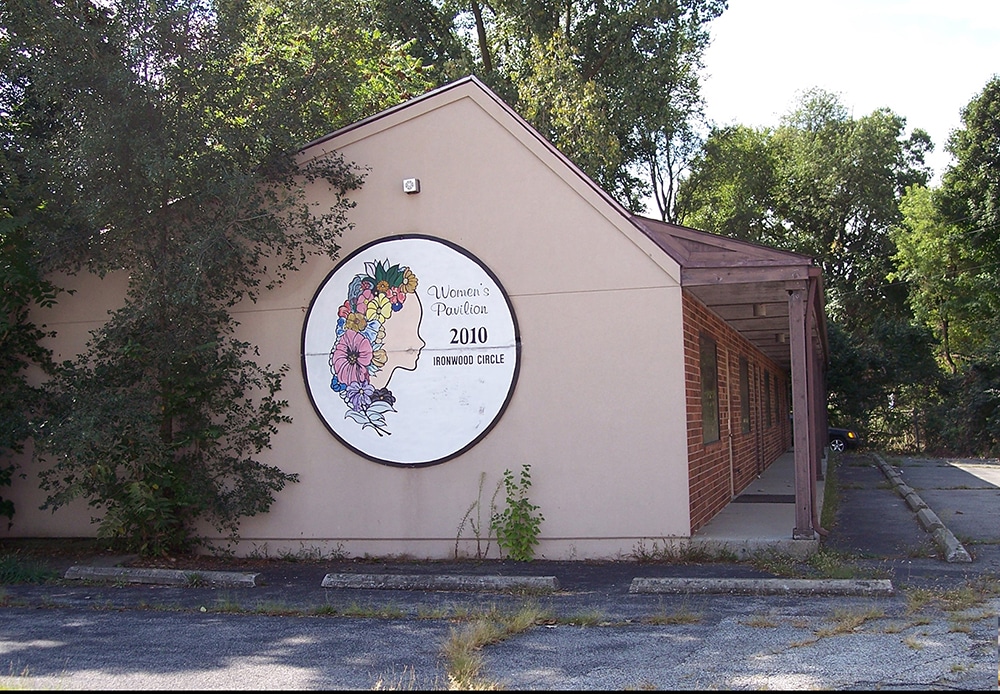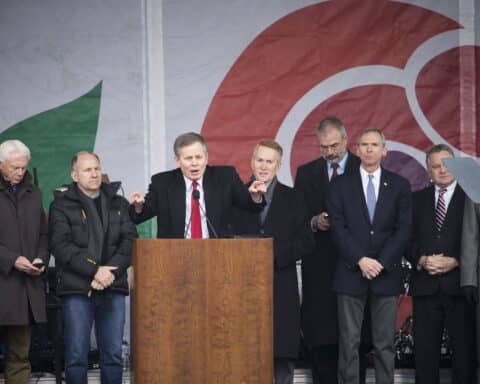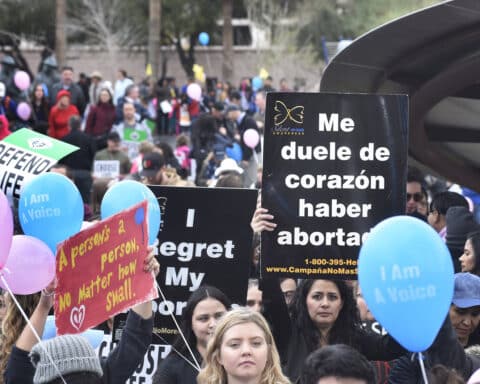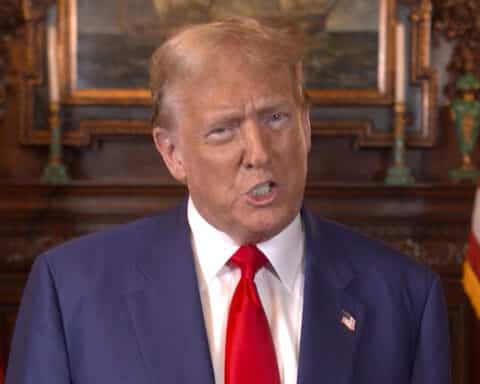The following is a homily given by Father Daniel Scheidt, pastor of St. Vincent de Paul Parish in Fort Wayne, Indiana, on the 24th Sunday in Ordinary Time, Sept. 15. In the Gospel reading for the day, Jesus offers three parables: the lost sheep, the lost coin and the prodigal son. It had been reported days earlier that following the death of abortionist Ulrich “George” Klopfer, authorities had found the medically perserved bodies of more than 2,200 of his abortion victims. The text has been edited for clarity.
On the news today there was the story about the abortion doctor and what was found in his garage. George Klopfer had a clinic in Fort Wayne, in South Bend and a number of other places. And for years, whenever he would be in town, and even when he wasn’t, all sorts of people went and prayed in that place. There was a parishioner of St. Vincent’s who, for so many years, did that. He eventually got to know George Klopfer personally. And George came to know him. And even after his license was taken away by the state, George Klopfer kept returning to his closed clinic so that he could get out of his car and sit in the passenger seat of the St. Vincent’s parishioner’s car and talk to his friend.
Every single Thursday, George Klopfer drove from Chicago to be with his friend. I know this because his friend invited me to join George Klopfer in the car. Twice I sat next to that man, who is responsible for the ending of over 30,000 human lives. The first thing that he said to me when he met me was the shameful abuse perpetrated by bishops and priests that wounded and killed the souls of so many children. And that accusation was actually a revelation of his heart. He was a man who knew suffering from within.
As I asked him about his childhood, he said that he grew up in World War II and saw the war first-hand — dead bodies, the neglect of human beings for each other. He had the memory seared in his mind of the Russian troops machine-gunning small animals — not for food, but just to be cruel.
I asked him what prompted him to get into medicine, and the first thing that he recounted was a failure of a heart operation that he was assisting in, and the patient died. Another abortionist, Bernard Nathanson, who ran the largest facility in the world in the 1970s, and who later converted, was baptized on the feast of the Immaculate Conception. He was the founder of the National Abortion Rights Action League. Dr. Nathanson said that, for many abortionists, their failure in other areas of medicine leads them into a type of bottom-feeding in the profession, because the procedure, medically speaking, is actually pretty simple. The ending of a human life is less complicated, medically, than trying to save it. Doctors at that level go into surgeries in the womb that save lives rather than the alternative.
And it was clear when I asked Dr. Klopfer more questions about his medical practice, if he has any colleagues who are friends, he said, “No.” It became clear in our conversation that we were his only friends. It’s what prompted him to drive the distance and to want to meet with the priest.
At a certain point, I said, “George, I’m just really grateful that you said ‘yes’ to meeting me before you knew me. I’m glad that you welcomed me before you even knew my name.” And he saw what was in the question. Each one of us in our conception came into this world having to be accepted before we were known.
He would say on more than one occasion, “I guess I’m gonna go to the heaven of Hitler and Stalin.” He had interiorized so much suffering. He even discussed his sins, his failures.
My last memory of him, the last moment I saw him, was when he saw a car come in the parking lot, and a woman get out with her little daughter. He knew her name. She was going to open up the Allen County Right to Life building. He knew what she did. And she knew him. And he said, “Let’s get out of the car and say hello.”
So we did. It was one of the most surreal moments of my entire life. The priest, the abortionist, the woman who is a mother, who works for Right to Life, and her little child and a parishioner making intercession and extending friendship.
My brothers and sisters, we must go in search of the divine image in every person. I saw in George Klopfer not simply one who slaughtered, but a lost sheep. Someone infinitely more valuable than a coin. Somebody who needed to know his sonship. I asked him if he ever had children of his own, and he said “no.” I asked him about who he was married to, and he said, “I’m married to a heart surgeon.” She fixes people’s hearts. Perfect.
The St. Vincent parishioner in his last conversation with George said, “George, it’s not too late. You’re like the thief on the cross next to Jesus. You belong to Jesus, George. Accept that. Even in the last hour, accept that.” And the parishioner, who so many times left the Thursday meeting with frustration at the progress, left that meeting believing that he had actually reached George’s heart.
Only God knows the last hour. How can the life of that man be used as an instrument for Jesus to perform open-heart surgery on us? What if this week we were to ask the question, “What are we still hiding in the garage of our hearts? What parts of our life do we consider so shameful, so beyond the possibility of God reaching, that rather than surrender them to him, we hide them like dead things?” That is what we need to bring to Jesus. The reason he gives us the Sacrament of Reconciliation is so that we don’t have to hide the effects of what we’ve done. Rather than being a secret horror, an accusation of our condemnation, Jesus wants us to give that to him so that it becomes a trophy of his humility alive in us, his courage alive in us, his homecoming alive in us.
Jesus, himself, is the Lamb of God slain for us. He’s not just the Good Shepherd. He’s the slaughtered victim. Jesus is the one who has paid the last coin to save us, and in doing that, he shows us our value. No matter how deformed the divine image is in us, Jesus is the one who is able to go the distance from where our heavenly Father waits to the pigsty, back and forth, no matter where we find ourselves.
This week, we need to beg Jesus to feel his sense of loss for people that we are tempted to dismiss. We must feel his passion to go after them. We must beg him to give us the ability to find just the right way to make just the right connection to invite people to take the next step.
Why? Because he puts his joy in us for us to use these three parables, and the death of a man who furthered tragedy and suffered it. For us to use that as the moment of conversion, the Lord will reveal joy. For George Klopfer to see his life as God sees it; for him to see his life connected to ours; for all that he was afraid to do; for us to pick up the courage to bring the worst of the worst to Jesus in the way that he wants, there will be joy.
God possesses the ability to transform and to heal human life. This is our story. And Jesus has given everything — everything — for us to be part of the happy ending.





